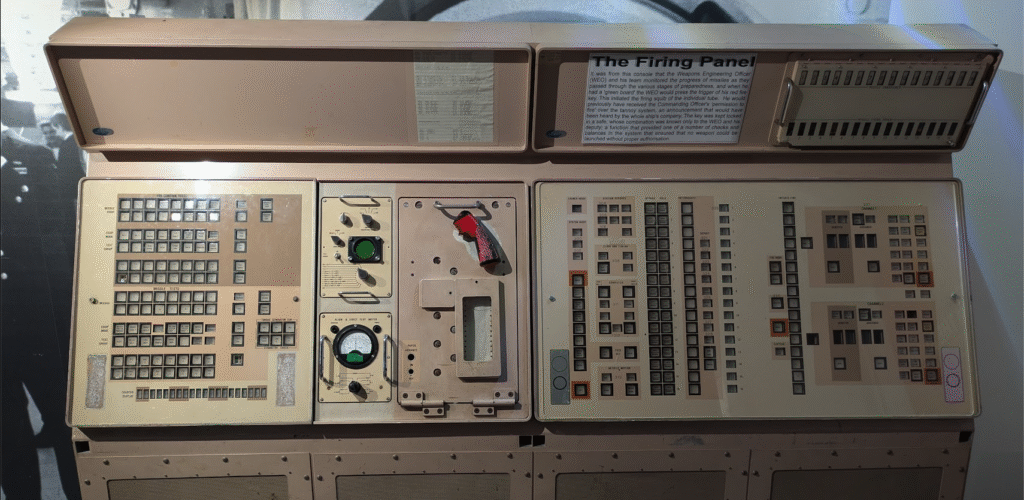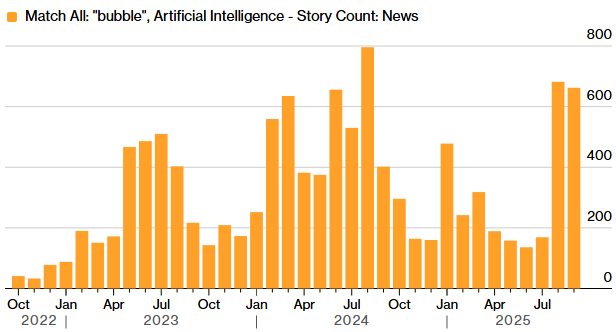
It is no secret that I am leaving Oracle to join Nscale at the end of this month. My main aim was to avoid the Oracle RIF/layoffs and while putting the worse case scenario in place, I managed to get a role at Nscale.
Both Oracle and Nscale are hedging their bets on AI and with the current worry that the AI bubble is going to burst, with the boss of Google saying: ‘no company is going to be immune’ [BBC], I asked AI these questions…
How Oracle would suffer in an AI crash?
Oracle would experience significant financial and operational setbacks if an AI crash occurs, mainly because its recent strategy has focused heavily on AI cloud infrastructure and hyperscaler partnerships. Here’s how Oracle and Oracle Cloud Infrastructure (OCI) would suffer:
Revenue Slowdown and Underutilized Data Centers
- Oracle expects that AI-driven cloud infrastructure could make up the majority of its revenue by 2030, with multi-billion dollar GPU investments and flagship deals supporting OpenAI, Meta, and other hyperscale model trainers.webpronews+1
- In an AI crash, client demand for large-scale training and inference workloads would sharply decline. That means Oracle’s new data centers and GPU fleets (including hundreds of thousands of Nvidia GPUs) could become underutilized, forcing write-downs and lowering ROI.fortune
Margin Compression and Volatility
- Oracle’s current margins on AI cloud offerings are modest (around 14% in recent quarters), and plans for improvement depend on scale and full utilization of infrastructure.bloomberg+1
- Reduced client activity would keep margins low or negative, intensifying investor scrutiny and driving downward pressure on stock price—recent volatility already shows concern over fulfilling ambitious AI cloud predictions.cnbc+1
- Oracle would also struggle to justify continued massive investments to shareholders if growth fails to materialize.
Exposure to Contract and Customer Risk
- Oracle is especially exposed to a few large anchor clients (e.g. OpenAI, Microsoft), who may defer or downsize contracts if the economics of large-model training weaken.webpronews+1
- Cancellations or renegotiations on these hyperscale deals would lead to revenue instability and possible reputational harm in the cloud sector.
Delayed Application Growth and Broader Impact
- While Oracle’s core application business (ERP, NetSuite, traditional cloud services) offers some revenue buffer, these divisions would also be affected by a broader tech and enterprise spending slowdown typical in an AI-induced market downturn.constellationr+1
- Expansion plans and R&D investment would likely be scaled back, slowing Oracle’s ability to compete with more insulated rivals.
Summary Table: Oracle’s Pain Points in an AI Crash
| Effect Area | Oracle Cloud & Business Impact |
|---|---|
| Infrastructure ROI | Underutilized data centers, GPU fleets |
| Margins & Profit | Margin compression, stock volatility |
| Contract Risk | Deferred/canceled hyperscale projects |
| App/Enterprise Spend | Revenue dampening, slower growth |
In summary, Oracle would suffer via underperforming cloud assets, margin pressure, dependency on a handful of high-risk AI clients, and contraction of enterprise demand. While traditional non-AI applications offer some shelter, the scale of Oracle’s recent AI cloud bets makes it highly exposed to a major market correction.reuters+6
How Nscale would be affected by an AI crash?
Nscale would be severely affected by an AI crash due to its intense reliance on hyperscaler contracts, rapid capital deployment, and debt-financed AI infrastructure builds. Its business model is specifically geared toward serving large-scale AI model training and compute workloads, making it one of the highest-risk startups in a downturn scenario.
Revenue Freeze and Stranded AI Data Centers
- If AI demand collapses, hyperscalers like Microsoft and OpenAI—Nscale’s anchor clients—would scale back their contracts, delay GPU purchases, or walk away from expansion phases, freezing Nscale’s main cashflow pipeline.computing
- Data centers built for intensive model training could be left mostly idle, forcing Nscale to absorb heavy operational losses while continuing to service debt and lease obligations.
Investor and Debt Pressure
- Nscale’s recent $1.1 billion Series B and $433 million SAFE financing involve a mix of industrial and venture capital (Aker, Nvidia, Dell, Blue Owl), and depend on optimistic growth projections and future contract fulfillment.cnbc+3
- In a crash, these investors would likely mark down their stakes significantly, making further fundraising difficult. If cash flow dries up, Nscale could face covenant breaches, mass layoffs, and possibly insolvency.
Asset Write-Downs and Market Value Declines
- Large inventories of Nvidia GPUs and purpose-built data centers for AI workloads could lose much of their resale value if a flood of surplus infrastructure hits the market simultaneously.computing
- Hardware and campuses not suited for general-purpose workloads would be especially vulnerable—mirroring the fate of unused “dark fiber” and crypto-mining assets after previous speculative bubbles burst.
Strategic Pivot and Survival Pathways
- With deep exposure to hyperscaler deals, Nscale’s best shot at survival would be pivoting toward government-backed sovereign compute projects, or repositioning under-utilized capacity for scientific, academic, or inference-driven workloads.computing
- However, the overall scale-back in AI investment would make even these pivots challenging and may require restructuring, asset sales, or merger activity.
Summary Table: Nscale’s Crash Exposure
| Pain Point | Crash Impact |
|---|---|
| AI contract reliance | Revenue freeze, phased-out deals, layoffs |
| Infrastructure assets | Write-downs, idle data centers, GPU oversupply |
| Investor relations | Markdowns, covenant risk, fundraising difficulty |
| Pivot opportunities | Limited to sovereign or non-AI workloads |
In summary, Nscale would be among the hardest-hit AI infrastructure startups during a crash, facing immediate cash flow problems, asset devaluation, and existential threats unless it rapidly adapts or receives protective strategic support.uktech+4
As an employee of Oracle or Nscale – who would be worst affected in an AI crash?
As an employee, Nscale staff would likely be much worse affected by an AI crash than Oracle employees. This is due to the relative scale, business diversity, and risk tolerance of the two companies:
Nscale Employees: High Risk
- Startup Vulnerability: Nscale is a high-growth, venture-backed startup focused almost entirely on the AI cloud hyperscaler market. If an AI crash occurs, Nscale would face abrupt revenue freezes, contract withdrawals, and rapid asset devaluation, with far less financial cushion to weather losses than a large incumbent like Oracle.
- Layoffs and Insolvency Risk: In a crash, Nscale may be forced to lay off a substantial portion of its workforce quickly, pause projects, or even enter administration if funding evaporates or debts cannot be serviced. Employees could face sudden job loss, delayed salaries, and loss of equity value, with fewer internal opportunities for reassignment.
- Equity and Options: Most compensation upside for Nscale staff is likely tied to startup equity. A market correction would deeply devalue or wipe out employee options/shareholdings, and prospects for another lucrative exit (e.g., IPO or acquisition) would diminish drastically.
Oracle Employees: More Stability, Less Immediate Risk
- Diversified Business: Oracle is a global enterprise with diversified revenue streams across cloud, applications, hardware, licensing, and services. Even with heavy AI investment, its overall risk is spread out, and core business lines would remain resilient.
- Less Severe Layoffs: Large tech companies like Oracle do enact layoffs in downturns, but they tend to be more measured and spread across divisions. Employees have more options to transfer internally or leverage severance and career support programs.
- Compensation Impact: Public company employees with RSUs or stock options would feel a drop in value, but these tend to recover after corrections, and overall job security remains higher due to Oracle’s operational scale and financial reserves.
Summary Table
| Factor | Nscale Employee Impact | Oracle Employee Impact |
|---|---|---|
| Layoff risk | Extremely high, abrupt | Moderate, measured |
| Job security | Low | High |
| Equity/option value | Likely wiped out | Lower, but more resilient |
| Internal mobility | Minimal | Significant |
| Corporate backup/support | Minimal/none | Substantial |
In summary:
Nscale employees are far more exposed to job loss, equity wipeout, and uncertainty during an AI crash, while Oracle employees—even in affected AI-focused roles—would generally be shielded by the company’s size, global reach, and business diversity.
What is the benefits of joining Nscale for my career over staying at Oracle
Joining Nscale instead of staying at Oracle offers a profoundly different set of career benefits and risks. Your choice should be shaped by your appetite for growth, impact, compensation profile, and risk tolerance.
Career Acceleration and Impact
- Rapid Responsibility & Visibility: At Nscale, a high-growth AI infrastructure startup, you’re likely to hold broader responsibilities, have a direct line to executives, and see tangible impact from your contributions—versus a more specialized, hierarchical environment at Oracle.linkedin+1
- Cutting-Edge Technology Exposure: Nscale’s business is centered around the latest in AI hyperscale, GPU clusters, and sovereign compute, putting you at the heart of Europe’s most ambitious AI and cloud projects. This hands-on work accelerates technical learning and keeps you current with elite tooling.linkedin
- Networking Opportunity: Being at a much talked-about scaleup, you’ll interact with top-tier industry partners (Microsoft, Nvidia, blue-chip VCs), as well as the fast-moving European AI ecosystem, which can boost professional reputation and future opportunities.cnbc+1
Compensation and Equity
- Equity Upside: As with most startups, joining Nscale comes with employee equity—potentially life-changing financial upside if the company’s rapid growth leads to a successful IPO or acquisition. At Oracle, equity is usually granted as RSUs whose upside, while substantial, is tied to a mature company’s slower growth trajectory.
- Compensation Mix Changes: Startup salary may be lower or matched to Oracle’s, but total comp potential is usually tied more to company performance and exit events.
Innovation, Learning and Influence
- Innovation Environment: Nscale’s pace and hunger for innovation generally surpass what’s possible at a large, diversified incumbent like Oracle. Progression can be much faster for high performers at a startup, and you have more say in technical and strategic direction.
- Learning Curve: The breadth of challenges—from scaling infra to winning deals and iterating products for hyperscaler clients—means you’ll develop skills quickly that are valuable for future founding roles, CTO posts, or senior technical leadership.
Risks, Trade-Offs and Stability
- Job and Financial Risk: As shown in your AI crash scenario queries, Nscale is exposed to sector volatility. Layoff, equity wipeout, or strategic pivots are real risks in a downturn, while Oracle offers much greater job security and stable, long-term career pathways.
- Work-Life Balance: Startups typically expect longer hours and intense focus, often trading stability for the chance at rapid advancement and financial gain.
Summary Table: Nscale vs Oracle Career Benefits
| Career Factor | Nscale (Startup) | Oracle (Enterprise) |
|---|---|---|
| Career acceleration | Very high—fast progression, impact | Slower, more structured |
| Tech exposure | Latest/bleeding-edge AI/GPU work | Solid, broad enterprise stack |
| Compensation upside | High equity, risky | Stable salary, predictable RSUs |
| Job security | Low—volatile, high layoff risk | High, robust to market downturns |
| Influence | Large, direct access to leadership | Smaller, part of larger organization |
| Work-life balance | Often demanding | Generally more moderate |
| Networking | Top-tier VCs, hyperscalers, founders | Global enterprise contacts |
In summary: Nscale offers a “rocket ship” growth and learning environment for someone hungry for ownership, innovation, and possible equity windfall—but this comes with higher risk and volatility. Oracle provides greater long-term job security, measured career progression, and reliable compensation, but less potential upside and less direct influence. The right choice depends on your risk appetite, ambition, and career goals.uktech+2





